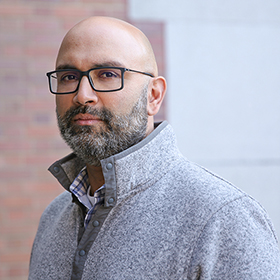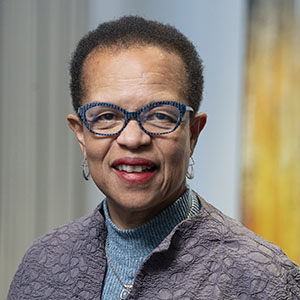Peer-driven change is a naturally occurring social phenomenon that has existed since time immemorial. Recall the 19th century barn raisings in rural America, where everyone in the community put their shoulders to the task; or the initiative and mutual support that enabled immigrants to build entrepreneurial lives in the United States and other countries. Whether they are creating a better future far from their homelands or striving to climb the income ladder, people experiencing poverty and other challenges are enormously resourceful. They often know best how to surmount their challenges. Nevertheless, funders have not yet fully recognized and invested in the power of people pulling together and acting on their own behalf.
Case Studies
Communities in the Bay Area, Rwanda, and Boston reveal what people experiencing poverty can achieve when they set their own direction and work collectively to advance their lives.Read more >>
So why is this charged moment—as the COVID-19 crisis continues to swell in the United States and elsewhere and as more and more Americans support the Black Lives Matter protests demanding racial justice—an opportune time for funders and other social sector actors to experiment with this approach to driving social change, learn from it, and hopefully advance it?
Amid the Pandemic, an Opening for Peer-Driven Change
Financial capital, where peer groups of families and communities share funding from internal sources (such as savings groups) as well as from external sources, is the oxygen that enables people to take a deep breath and push for the next rung on the income ladder. If there is at least a pewter lining to this terrible pandemic, it is that the crisis has pushed an old idea that is core to peer-driven change—directly funding people’s initiative via unconditional cash transfers (UCTs)—into the mainstream.This past spring the US government, in a dramatic, pandemic-driven move, began issuing no-strings-attached stimulus checks to millions of Americans. And in June, Stockton, California Mayor Michael D. Tubbs and the Economic Security Project formed Mayors for a Guaranteed Income, a coalition of US mayors that advocates for a federal guaranteed income and supports pilot programs to test the concept. As of late July, the mayors of 16 cities—including Seattle, Atlanta, and Jackson, Mississippi—had joined the initiative.
These policymakers are building on the experiences of organizations such as GiveDirectly, which over the past decade has shepherded more than $160 million in no-strings-attached cash transfers to people experiencing poverty across eight countries. With the COVID-19 pandemic threatening to push millions of people into extreme poverty, The Audacious Project announced it will fund GiveDirectly’s effort, over the next 12 months, to scale UCTs to more than 300,000 people “who need it most.”
Those large-scale developments signal a willingness, among not only policymakers but also funders and nonprofits, to invest directly in families and communities, which Spark Microgrants is enabling in five African countries and Family Independence Initiative is facilitating in communities across the United States. The logic: People experiencing poverty are closest to their challenges and often know best how to use capital to overcome those challenges.
The pandemic has also injected new life into another idea that has existed on the periphery of the mainstream social sector: mutual aid. In the early days of the COVID-19 crisis, as cases in the United States began to surge and entire communities began to hunker down, the pandemic delivered a paradox: other people could be vectors of the illness, but they could also be protectors, by providing vital supports to their families, neighbors, and even strangers. As author Jia Tolentino put it in The New Yorker, “Physical connection could kill us, but civic connection is the only way to survive.” Mutuality, where people share information and knowledge and back each other up as they climb the income ladder, is another key element of peer-driven change.
As the COVID-19 crisis gathered force, in many places the ties that bind neighbors and communities strengthened and spread. The pandemic unleashed a wave of self-organized, peer-to-peer voluntarism, such as informal food-distribution collectives and ad hoc, student support networks. The Black Lives Matter protests spurred a second virtuous cycle of people coming to the aid of other people—and other people returning the favor.
In a Chronicle of Philanthropy op-ed, Stanford University’s Mohit Mookim and Rob Reich observed that as “the public health-crisis collided with a moment of racial reckoning, people across the nation started organizing not just to meet basic needs, but to uproot and transform entrenched structures of white supremacy in our society.” Examples of “mutual-aid philanthropy” soon followed, with restaurants providing food and water for people attending marches, and media outlets like SFist publishing lists of local, Black-owned businesses to support.
“There is no comprehensive directory of [mutual aid] groups,” observed Tolentino in The New Yorker. “But, suddenly, they seemed to be everywhere.”
The Upside of Ceding Control
These unexpectedly positive side-effects of the pandemic—accelerating interest in UCTs and naturally occurring mutuality—highlight that peer-driven change just might be inching closer to philanthropy’s prime time. But make no mistake, for funders, peer-driven change can require a fundamental shift in perspective: to recognize and embrace the initiative, self-determination, and mutuality of individuals and families and to reconceive of them as “makers,” not “takers.”As we noted in the SSIR article, “Nonprofits and philanthropists often think of low-income community members as the last mile of a social impact effort, where adoption and buy-in from community members are vital. With peer-driven change, those same people must be viewed as the first mile, where leadership, autonomy, and tenacity constitute the very engine of their own progress.”
When funders flip the power dynamic inherent in much philanthropic activity, by ceding control to constituents and supporting peer driven efforts without disrupting them, the results can be compelling, as we saw firsthand during our field research:
- In the San Francisco Bay Area, Iu Mien refugees from Laos, in an effort to reweave their social fabric and reclaim a sense of pride in their culture, collectively raised more than $500,000 to construct a community center and temple in East Oakland.
- Villages in northern Rwanda, where the average annual income is approximately $165, pulled together and collectively achieved life-enhancing goals, such as purchasing iron roofs for every home and acquiring a cow for every family.
- Across Boston, peer groups comprised of individuals and families helped each other launch small businesses, complete their college educations, and acquire their first full-time jobs.
For those funders who recognize that the time is right to think differently and lean into peer-driven change, they might stop asking themselves “What can we do?” and instead start by asking: “What are mutually supportive affinity groups doing to improve their lives—and how can we be useful?”
Rohit Menezes and Willa Seldon are partners, and Simon Morfit is a manager, in The Bridgespan Group’s San Francisco office.
[1] Those resources can include support in helping people form affinity groups so they can share information and knowledge; truly neutral facilitative support, as peer groups work toward consensus; or support in validating individuals’ and families’ results, as they track their progress toward self-identified goals.



